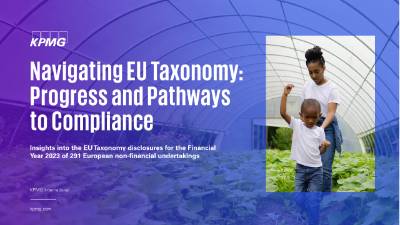Beginning of 2024, most large public-interest entities have published their EU Taxonomy reports for the third time and since the first year of application, reporting requirements have increased gradually. Companies went from only having to disclose ‘potentially sustainable’ (taxonomy-eligible) activities in reports published in 2022, to now having to assess taxonomy-alignment for the first two environmental objectives as well as eligibility for four more objectives defined by the EU Taxonomy. This not only changed the general amount of effort required for the analysis, but also led to more companies and their business models being covered, potentially bringing clarity into the sustainability efforts of a lot more industries.
This year’s study provides valuable insights in the EU Taxonomy disclosures of 291 European large public-interest entities. We analyzed which numbers of eligibility and alignment were reported on average in different sectors and whether those, as well as the accompanying qualitative disclosures, have improved compared to the previous year. We also analyzed how overall eligibility has changed with new activities for the four remaining environmental objectives being introduced.





